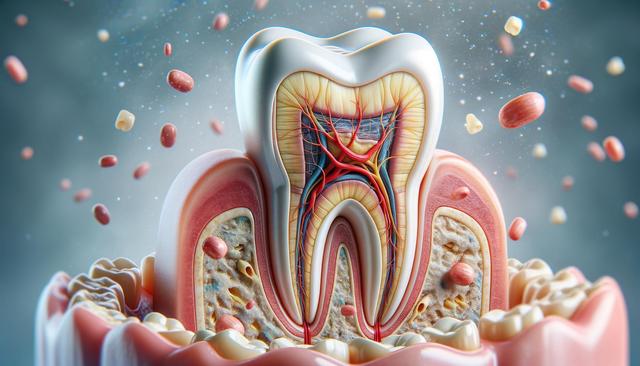Understanding the Need for Root Canal Treatment
When a tooth becomes severely decayed or infected, a simple filling may not be enough to restore its health. In such cases, a Root Canal becomes necessary to preserve the natural tooth and avoid extraction. This procedure targets the innermost part of the tooth, known as the pulp, which can become inflamed due to deep cavities, repeated dental procedures, or trauma. Once the pulp is compromised, it can lead to intense pain and even abscess formation, making timely intervention essential.
Root Canal Treatment is especially valuable because it allows patients to retain their natural teeth while eliminating the source of discomfort. Without this procedure, the infection could spread to surrounding tissues, causing further complications. The treatment is a common recommendation by dental professionals when they aim to save the tooth’s structure and restore its function.
Common signs that may suggest the need for a Root Canal include:
- Prolonged sensitivity to hot or cold temperatures
- Severe toothache when chewing or applying pressure
- Discoloration of the tooth
- Swelling or tenderness in nearby gums
- A pimple-like bump on the gums near the affected tooth
If you experience any of these symptoms, it’s important to seek professional dental evaluation promptly to determine whether Root Canal Treatment is the right course of action.
The Step-by-Step Process of a Root Canal
Root Canal procedures typically follow a structured process that ensures thorough cleaning and sealing of the affected area. The first step involves a dental examination and X-rays to assess the extent of the damage. Once the dentist confirms the need for treatment, local anesthesia is administered to ensure the procedure is comfortable and pain-free.
The dentist then creates a small opening in the crown of the tooth to access the pulp chamber. Using specialized instruments, the infected or inflamed pulp is carefully removed. The inside of the tooth is then cleaned and shaped to prepare it for filling. After cleaning, the space is filled with a biocompatible material, typically gutta-percha, and sealed with adhesive cement to prevent future infection.
Depending on the condition of the tooth, a temporary or permanent filling is placed to close the access hole. Often, a crown is recommended afterward to reinforce the tooth and restore its full function. The entire Root Canal Treatment process can usually be completed in one or two visits, depending on the complexity of the case.
Benefits of Undergoing Root Canal Treatment
Root Canal procedures offer several significant advantages, especially when compared to tooth extraction. Saving the natural tooth helps maintain the alignment of the remaining teeth and supports normal chewing function. Here are some benefits of choosing to undergo Root Canal Treatment:
- Long-term pain relief by removing the source of infection
- Preservation of natural appearance and function of the tooth
- Enhanced oral health by preventing the spread of infection
- Avoidance of more complex dental procedures such as implants or bridges
Additionally, Root Canal{state} procedures have advanced considerably over the years, making them more efficient and comfortable. Modern dentistry uses improved techniques and materials that increase the success rate and reduce recovery time. Many patients report significant relief from pain immediately following the procedure and are able to return to normal activities shortly afterward.
Recovery and Aftercare Following a Root Canal
After completing a Root Canal, proper aftercare is essential to ensure the tooth heals correctly and remains functional. Mild discomfort or sensitivity is common in the days following the procedure, but this typically subsides with over-the-counter medications and good oral hygiene practices. Patients are usually advised to avoid chewing on the treated side until the final restoration, such as a crown, is placed.
To support healing and maintain oral health, consider the following post-treatment guidelines:
- Brush and floss as usual, but be gentle around the treated area
- Attend all follow-up appointments for permanent restoration
- Avoid hard or sticky foods that can dislodge temporary fillings
- Contact your dentist if you experience prolonged pain or swelling
With proper care, a tooth that has undergone Root Canal Treatment can last as long as natural teeth. Regular dental check-ups and a consistent oral care routine will help ensure the longevity of the treated tooth.
Choosing a Dental Professional for Your Root Canal
Selecting the right dental professional is a key part of ensuring a successful Root Canal experience. General dentists often perform Root Canal{state} procedures, but in more complex cases, they may refer patients to an endodontist – a specialist in treating the dental pulp and root tissues. An experienced provider will explain each step of the treatment and address any concerns you may have.
When considering Root Canal Treatment, look for a provider who:
- Has experience performing the procedure regularly
- Uses up-to-date technology and follows current best practices
- Offers a comfortable and patient-focused environment
- Is transparent about treatment options and costs
Don’t hesitate to ask questions about the procedure, recovery expectations, and any alternatives that may be available. A well-informed decision can ease anxiety and lead to a smoother treatment experience.
Conclusion: Preserving Your Oral Health Through Root Canal Treatment
Root Canal Treatment is a reliable and effective way to address tooth infections while preserving your natural smile. By removing the damaged pulp and sealing the tooth, this procedure helps eliminate pain and prevent further complications. Understanding the process, benefits, and aftercare steps allows you to approach the treatment with confidence.
Whether you’re experiencing symptoms or have been advised by your dentist, Root Canal{state} procedures offer a path toward long-term oral health. With advances in dental care, the procedure has become more accessible and manageable, providing relief for countless individuals. Prioritizing your dental health through timely intervention can lead to a healthier, pain-free life.

Leave a Reply